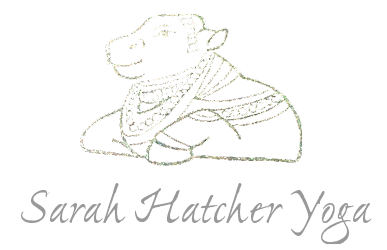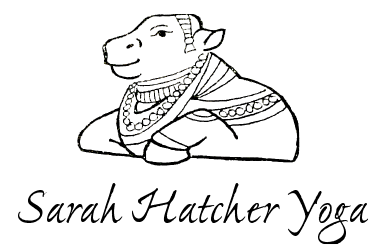The layers and layers of Advanced Arm balances - Ekapada Bakasana...Karandavasana...Viparita Chakrasana...and the incredible teachings of David Garrigues
Viparita Chakrasana, Ekapada Bakasana, and Karandavasana are three arm-balances that are formidable to yoga practitioners because all three require so much intensity and effort, time and dedication, and a willingness to tap into foundations of the practice that are sometimes overlooked by flexibility or strength. We all have an area that we are stronger in; maybe for someone it is flexibility, maybe another it is strength. And we can use these to our advantage as we move in and out of postures. Yet, in these asanas, the foundations cannot be overlooked - we can't rely on our strengths to get us through - we must become even more tapped into our subtle body, where our roots and foundations are found.
In Viparita Chakrasana, (a hand stand with your feet touching your head; to many this posture is called ‘scorpion’), there are multiple things that have to happen BEFORE you can successfully learn this posture. As I learn this posture, David shares with me sweet details of the subtle practice in his teachings. Yesterday, he was telling me that there has to be a foundational understanding of the basics before advanced postures are achievable in their fullest form. Even getting into and out of the postures properly, this is also part of unique aspect of the ashtanga practice - there is a proper method for entering and exiting. To fully understand this posture, it is necessary to get your shoulders way over your fingertips - i.e. reaching your nose and your chest far, far out in a handstand - way before your feet go down to your head. And then, when your feet DO touch your head - you must then squeeze them there and draw them closer to your forehead, then hold them there with ease. Ah, such magic happens, if and only if, we can do some things first.
There are layers and layers to yoga practice that are so subtle, there must be an intense willingness to understand how and what you are working towards. I am finding as I am learning third series, the foundations that I worked on for years while exploring the primary series is exactly what I am constantly tapping into in order to achieve revelation in the more difficult postures.
Me: I have kicked up three or four times in handstand to begin Viparita Chakrasana - only after finishing my tic tacs successfully. Here I go on my third or fourth try at getting my feet to slowly come to my head and finally, they do get there and I manage to hold the posture for five breaths! Today was one of the few mornings of success, and I think it has something to do with the fact that I tried Karandavasana (an intermediate series posture) at least eight times, getting half way down and then back up all on my own. (The story of Karandavasana will be in another post, so you just have to stay tuned on how David is teaching it to me.)
I say to David, both in exhaustion and in a little bliss: “Whew!" (Pant...pant...pant!) "Before I can even get them (my feet) to my head, I am taking at least five steps of action before they can come, like check points or marks on a checklist.”
David: “Yes.” Long Pause. “More like twenty.”
Me: “Is this how it is during all of these advanced postures? This constant checking off of required elements in order to get into the asana?” I am also referring to the challenging posture of Ekapada Bakasana...
David: “Yes. You want to be able to tap into the foundations faster, in an easier way - they need to be so molded and strong, so that you don’t have to check off them off in order to get into the posture...they are already there.”
Ah, the light comes out. Jumping back and through, jumping into postures, using uddiyana bandha and mula bandha correctly, breathing correctly, learning the proper drishti. Foundational asanas such as upward dog, downward dog...Surya Namaskar A and B - thorough understanding of the primary series. The list goes on and on. How about just doing primary series 1,000 times. Doing primary series 1,000 times, you may ask, is that really necessary!? Yes, really: it may take us at least that long to understand the subtleties of such foundations. I worked on primary series alone for about four years when I first began ashtanga. The magic and healing aspects of the primary series are many! Never have I became bored or tired from diving deeper into the understanding of this primary series: the benefits of understanding your foundations while practicing primary give you the insights on how to tap into these bigger asanas.
[On a side note, I asked Nancy G two years ago something about mula bandha. She replied, “ask me again in ten years.” Enough said!]
Getting back to Viparita Chakrasana, on a gross physical level, this asana requires that you practice your back bends every day, for many, many years. Then, learning to drop back and then to come up. Then, maybe another year you learn how to kick up to handstand and then with control, fall backwards. Then comes learning how to jump back upwards from the back bend (Tic Tacs)...these are just a few of the asanas you may have to learn to get close to it. Add in there Kapotasana from the intermediate series...the list can go on and on.
If you are working on this asana as I am, we must allow our chests to open during back bending. We work on our back bends tremendously during ashtanga yoga practice. We have every reason to back bend: the pros of backbending are endless: we strengthen the spine (preparing us women for childbirth), it strengthens the front of the body; back bending opens the hips and the tops of the thighs, and it also makes our legs strong and vital.
Letting your chest open away from your hips allows for a big lift forward and up - necessary things to happen in order for your feet to come to your head in Viparita Chakrasana, not to mention less strain and stress on your lower back.
Yesterday, there was a glimpse into that subtle place of understanding and effort. How very challenging it is to find quiet and ease because there is so much chattering going on inside my head in order to get the check marks completed! Maybe in ten years I won't be mentally talking myself through asanas and thinking about the checkmarks, I will automatically just do the necessary required subtle movements without thinking about them. If I continue to practice, like I do every day, I am sure it will happen as David professes. Maybe I will even comprehend mula bandha even the slightest bit more, as Nancy invites me to. Yes, I can give it ten more years, no problem.
Talking with Maria about the practice, we were rapping our heads on how it is a required intention to become soft and quiet before you even go into such a posture like Viparita Chakrasana. This can be an applied lesson for any yogic endeavor you are working on. Here is an equation to sum it up:
Effort towards something must equal Non attachment to attaining it.
Now how does that work with goal setting, anyhow! Use detailed instruction with precise delivery, but then go for it without too much wondering! We cannot over-think our actions on the mat, we have to work towards it to the best we can, and go. We must, "take it", as Guruji would say.
Practicing with David these early days of AYS is a treasured, memorable, and most unique experience: the intimacy of his teachings with each and every one of us is delicate and precise. The vitality in David’s teachings was so powerful, he spends so much time and serious assistance with each and every one of us so patiently. I know why I tried Karandavasana eight times, and my Viparita Chakrasana four times, and then also, Ekapada Bekasana a half dozen...he was right there, and he was there when I needed him.
Days like this make the big move to Philadelphia from the quiet mountains of Idaho worth every hardship. Days like this allow me to remember all the days practicing alone in my living room and video-ing myself for learning and teaching purposes worth all the effort. Making a sacrifice to learn something completely - the correct method - from the right teacher, makes all the sense in the world.
I'm going to keep working on those arm balances...and working on toning down that inner chatter of mine! But until the day comes where everything fuses together, I'll have to tap into every resource I have!
Check out David's blog on Viparita Chakrasana via his Asana Kitchen videos: great!

This is a dated picture of me falling out of Viparita Chakrasana in February of this year while working by myself at the Muse yoga studio, in Boise.

And again here I am on the same day, working towards slowing everything down - my breath, my mind, just being. And then holding this position and staying here. It is very difficult to make my mind stop going through the checklist of required elements that are required just to get to this point.

